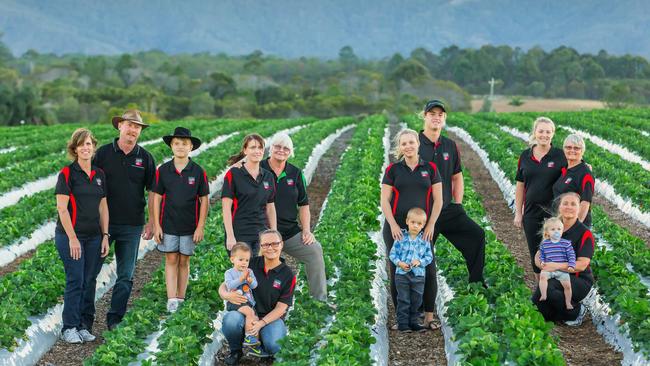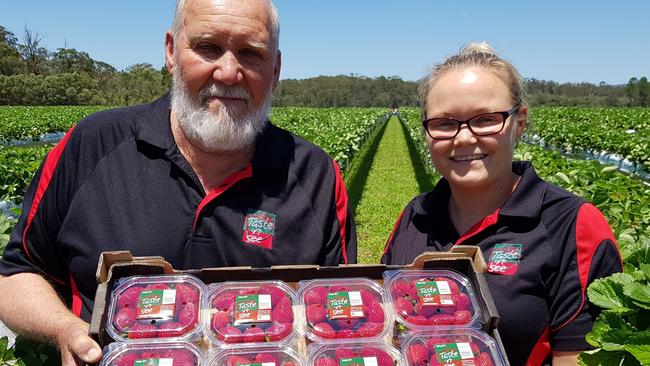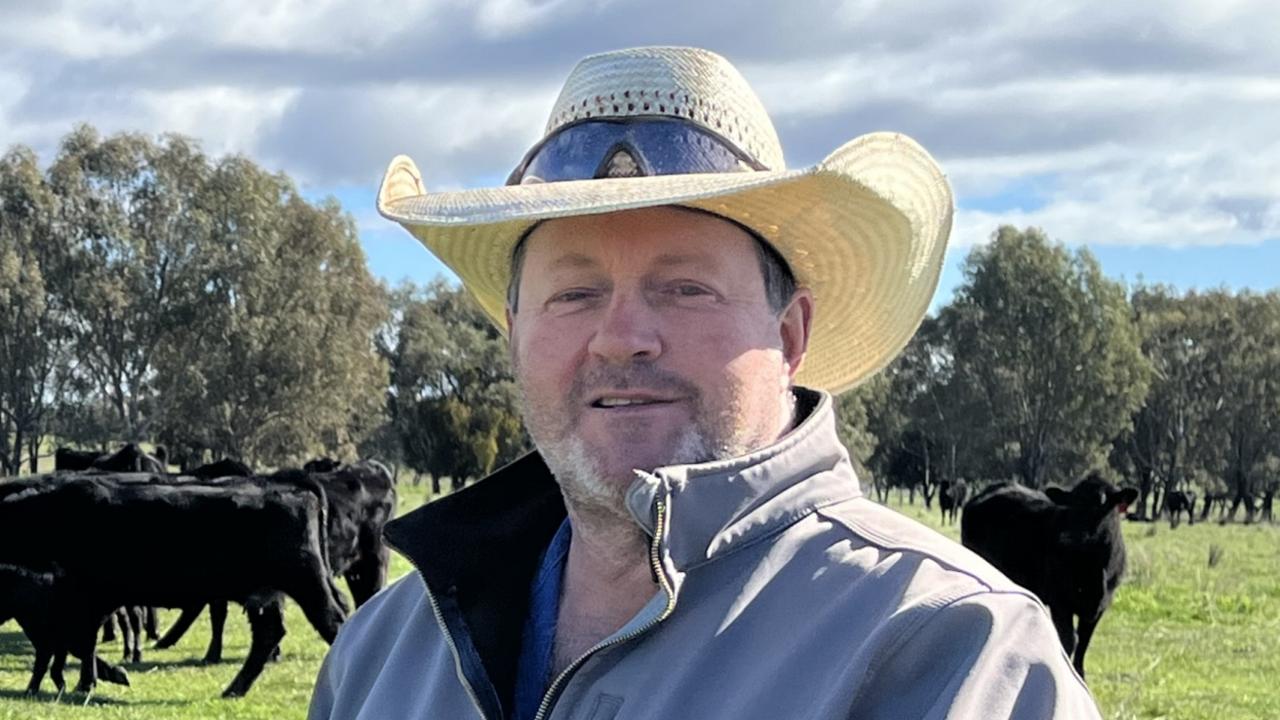Taste ‘N See strawberries: Schiffke and Stothart families from Bellmere farm for the future
TWO neighbouring strawberry-growing families have shown what co-operation can really achieve, writes SARAH HUDSON

THE Schiffke and Stothart families are more than just neighbours.
Since 1990, after the friends bought adjacent properties — at Bellmere in Queensland — they have been business partners, combining their production to grow strawberries initially for the wholesale market.
But it is a friendship that has continued to bear fruit: in 2003 both families agreed to sell their strawberries to Coles, shortly after launching their combined brand, Taste ‘N See.
The brand now has a total of 38ha under crop (19ha in each family), growing 2.5 million plants, or a total of 1680 tonnes annually of marketed first-grade fruit, all sold to Coles in 350g punnets.
“The two families have worked together for such a long time now we see it as just one business,” said Laura Wells, Taste ‘N See growing manager and daughter of business co-founders Merv and Marilyn Schiffke.
“We’re now into the second generation of farming and we’re just like one family. We always do everything together, meeting with the fertiliser company, talking about inputs, making future decisions.
“Even the pack house is divided evenly, with the properties’ boundary running down the centre.”
The bonds of the friendship were initially formed when Merv and Marilyn met Bryan and Jane Stothart (Bryan passed away four years ago), through a co-operative in the 1970s. Then — with a common Christian faith — the couple bought adjoining properties in Queensland’s Moreton Bay region, renowned as a prime strawberry-growing region for its cooler nights and warmer days.
While the farm has grown since then, the bonds of the friendship are growing stronger this year and next. with the families undergoing the biggest transition on the farm since they first began.
TABLE TURN
LAURA — who works with her two sisters and also alongside Jane Stothart and the Stotharts’ son-in-law David Fairweather — said this year Taste ‘N See had trialled 5.5ha of hydroponically-grown strawberries on outdoor tables, in coconut coir.
Next year about 60 per cent of the farm will move to hydroponics, (100 per cent in coming years), with systems across the farm also changing, making Taste ‘N See one of the early adopters of this production method in the region.
Irrigation will move from overhead and T tape, to an entirely computerised injection dripper-feed system.
Harvesting too will change from “backbreaking” ground work, to bench-level manual labour.
Chemical use will be reduced, while threats from pests — including mice, hares and ducks — will be eliminated.
She said the transformation is costing about $160,000 a hectare, but was necessary given both farms had been not rested since first being bought in 1990.
Up to next year’s introduction of hydroponics, Taste ‘N See has been field-grown, with up to 38,000 plants a hectare; table top hydroponics will allow for about 64,000 plants a hectare.
Every year new runners are planted in two key varieties: festival (an all-rounder with consistent yield) and fortuna (an early fruit), and with a small trial of a new variety red rhapsody, which has disease resistance, but is a darker colour and is currently being tested on the consumer market.
Runners are planted in March-April and harvested from May to November.
Depending on the season and variety, the families begin pulling out plants from as early as September.
Every year two-thirds of the strawberry field is left covered in plastic, which they have found increases organic matter, with plants pulled out in January and a slow release fertiliser applied, as well as cotton compost.

COVER DRIVE
THE remaining third of the farm has the plants and plastic immediately removed and a cover crop of legumes applied, which is ploughed into the soil around January, with slow-release fertiliser, cotton compost and dolomite applied, then plastic re-laid.
Plastic is left down for three consecutive years.
During the growing season every fortnight they apply microbial brews to boost organic matter.
To reduce the need for herbicide they apply woodchips between rows, which also reduces the threat of diseases.
Given the red clay to sandy loam soil is on a slope, any rainwater is channelled through a natural filtering system in to a series of dams.
Despite all these practices, Laura said the farm had not been rested.
“We don’t have the luxury of resting land. Obviously it’s good farming practice, but land in this area is very expensive,” she said.
As a result, she said yields had dropped, disease-threat heightened and the length of the growing season had shortened in recent years, which had been the catalyst for the two families to introduce the hydroponic growing system.
“This year because we’ve started on a section of the farm it has been a real juggle moving from the old into the new system,” she said. “I’ve moved into a role on the farm this year with my sisters, to help dad, who is not terribly computer savvy.”
Laura said the new system would allow the business to continue hiring 380 staff, including pickers and packers.
Harvest runs daily, but with an area picked every three days on rotation.
QUALITY PAYS
ONCE picked by hand, fruit is cooled, packed and graded by hand, then quality checked by quality assurance staff, before being transported to Coles, for distribution across the east coast.
Laura said the packhouse was low-tech, relying on human judgment rather than computers.
“We have loyal staff who have done the job for many years who make sure each punnet is packed and presented well, which a machine just wouldn’t find,” she said.
Laura said Coles first approached the two families to supply strawberries, because of their product’s long shelf-life, firm flesh and sweet flavour.
“Dad tells the story very proudly when nine representatives from Coles came to the farm and sat around the table wanting our fruit. He said ‘first of all you’ve got to pay for it and you’ve got to pay the right amount for quality’,” she said.“Some growers can be sceptical and chase the top dollar. But Dad and Bryan worked on the law of averages, not necessarily getting the best daily price, but getting the best average price across the year.
“The security of knowing every single strawberry has a home has allowed us to grow bigger over time. We’ve not had to seek another outlet. Both families feel very blessed.”


